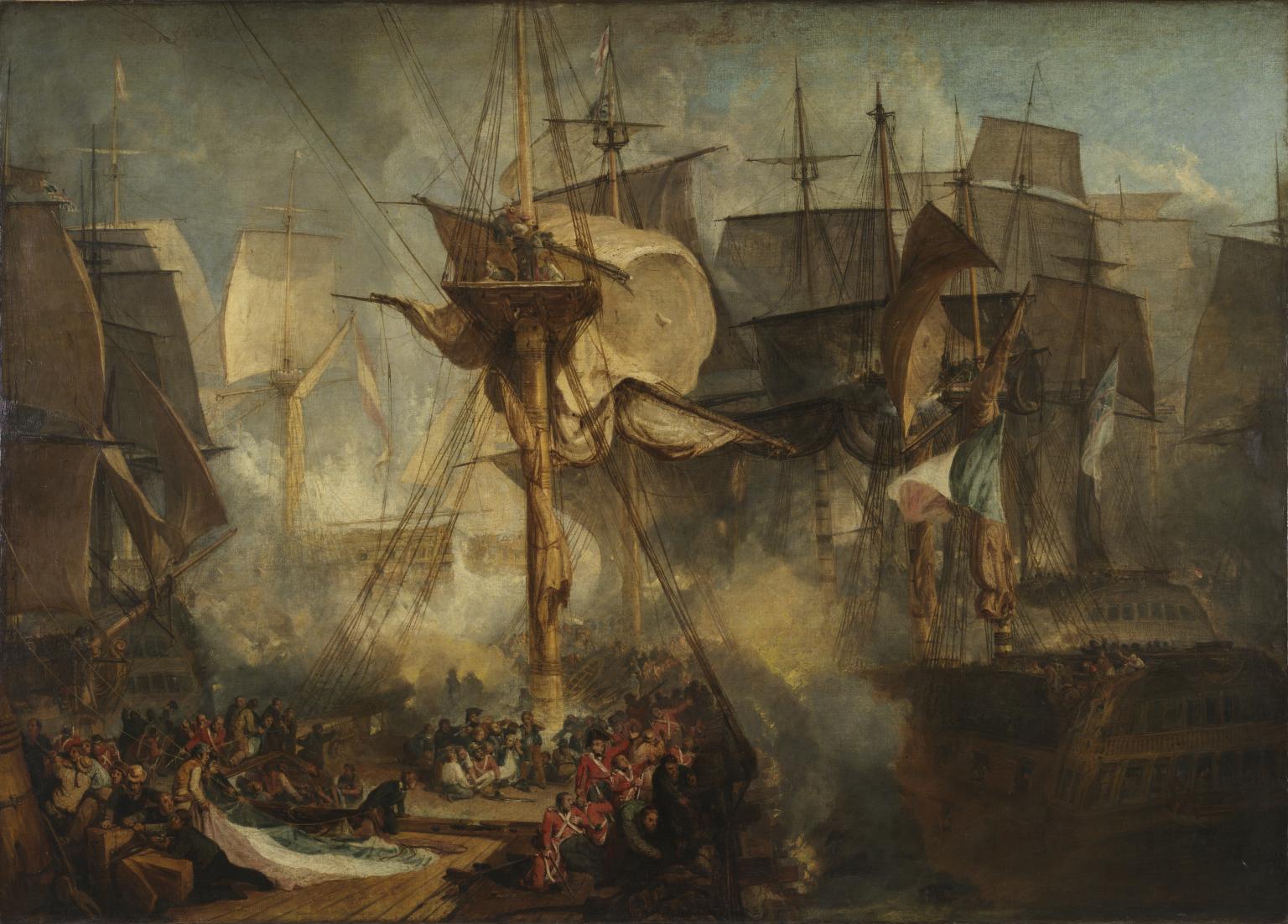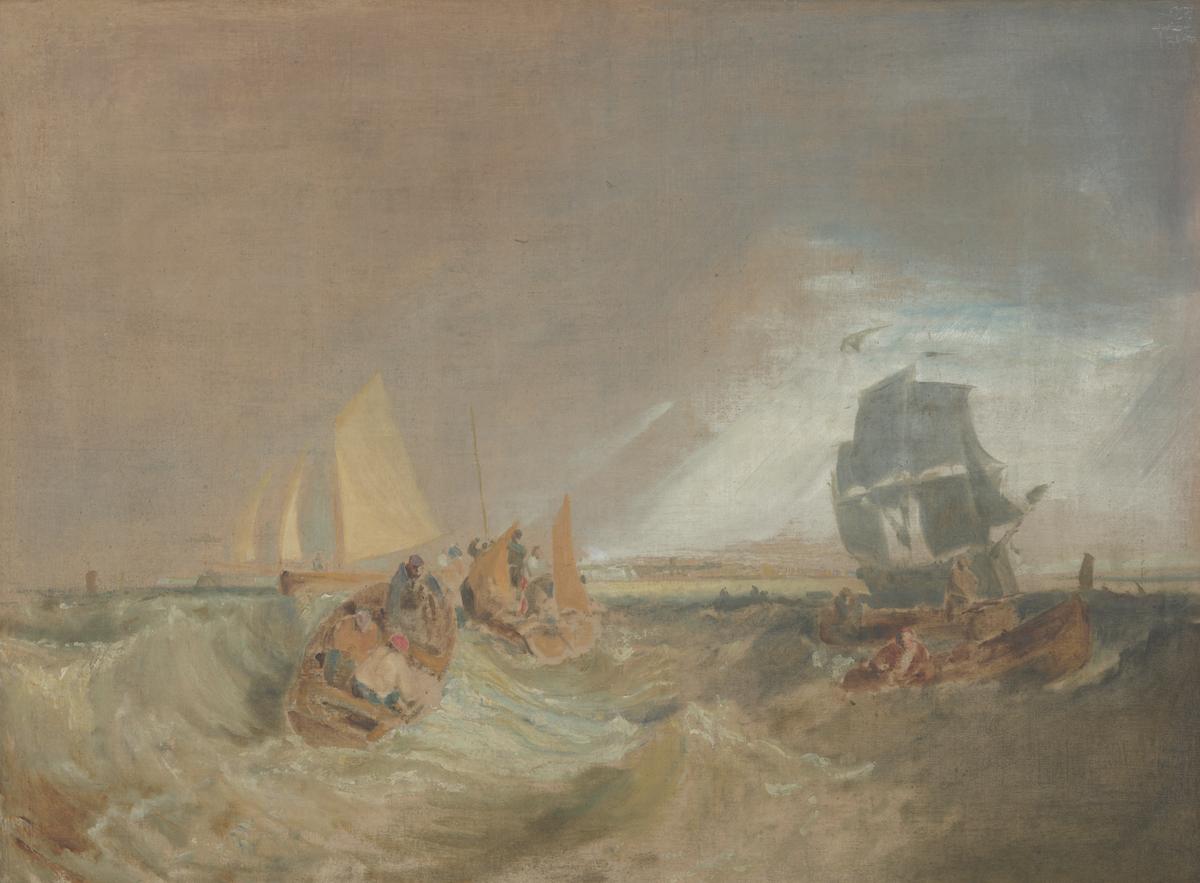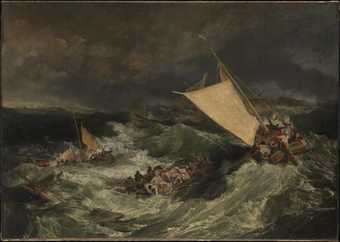9 rooms in JMW Turner
From the everyday work of fishermen to major naval battles, Turner’s paintings of the sea reflected Britain’s identity as a maritime nation
By the 1790s, Britain’s power at sea was unrivalled. Its navy, the largest in the world, was the force by which the country expanded its empire and its global commercial dominance. In Britain, this power was a comfort, since the very real threat of military invasion hung over British shores for the first half of Turner’s life. What began in 1793 as the Revolutionary Wars against France evolved into the Napoleonic Wars, a global clash of empires that lasted until 1815. The sea therefore loomed large in the national consciousness as a place where wars were fought, and the lives of loved ones were lost.
Always seeking to paint what mattered to Britain, Turner painted the war at sea. He spent time observing ships in naval ports on the south coast of Britain and used sailors’ accounts to help him depict Britain’s triumph at the Battle of Trafalgar. In so doing, he not only furthered his reputation as the nation’s most exciting maritime painter but also contributed to the patriotic spirit the government relied on to reassure the nation of the unwavering power of its navy.
Turner had a keen interest in all those who lived and worked at sea, particularly fisherfolk. They were the everyday heroes of Britain’s coastal life, their age-old occupation providing food and standing for tradition in a fast-changing world. In Turner’s paintings they are often seen battling the power of the sea itself, navigating storms and rescuing shipwreck victims.
Art in this room





